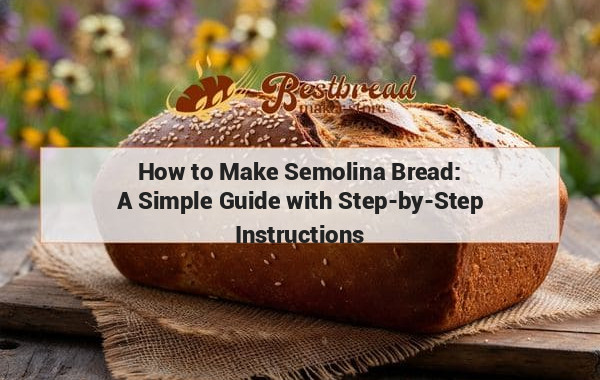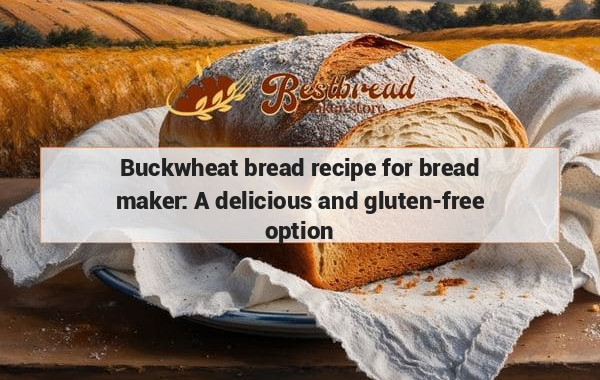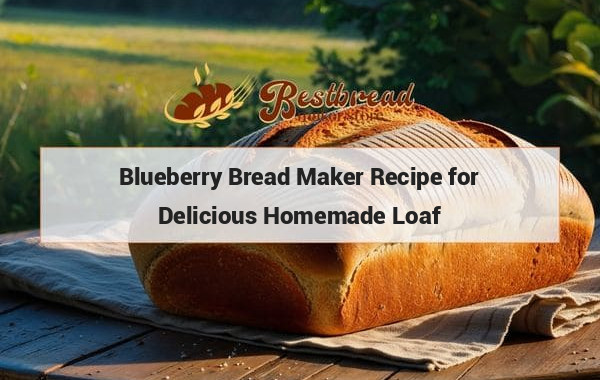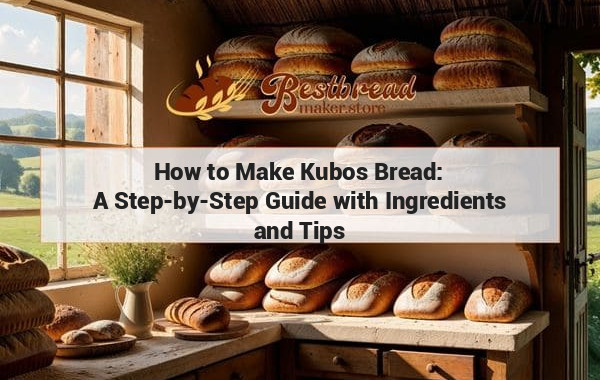How to Make Semolina Bread: A Simple Guide with Step-by-Step Instructions
To make semolina bread, start by combining semolina flour, yeast, sugar, salt, and warm water in a mixing bowl. Knead the dough until it is smooth and elastic, then let it rise in a warm place for about an hour. Shape the dough into a loaf and let it rise again before baking in a preheated oven. Enjoy the delicious aroma and taste of homemade semolina bread with a crisp crust and soft interior. Perfect for sandwiches or to accompany a hearty soup.
Semolina bread is a delicious and versatile type of bread that is surprisingly simple to make at home. This guide will show you how to make semolina bread using a bread maker or by hand, focusing on the key ingredients, steps, and tips to achieve the perfect loaf. Whether you're new to bread making or a seasoned baker, this recipe will help you create a loaf that's soft, chewy, and full of flavor.
Key Takeaways: Semolina bread is easy to make with a few essential ingredients: semolina flour, water, yeast, and salt. Using a bread maker simplifies the process, ensuring a well-kneaded dough and even baking.
Understanding Semolina Bread
Semolina bread is a staple in many Mediterranean cuisines, prized for its unique texture and flavor. Made from durum wheat semolina, this bread has a slightly nutty taste and a golden hue that makes it stand out from other types of bread. The high protein content of semolina flour gives the bread its chewy and sturdy texture, perfect for sandwiches or dipping in olive oil.
What is Semolina?
Semolina is a coarse flour made from durum wheat, often used in pasta making but also an excellent ingredient for bread. It contains more protein than all-purpose flour, which contributes to a chewier texture. The coarseness of semolina also gives the bread a slightly grainy texture on the crust, while the inside remains soft and airy.
Why Use Semolina for Bread?
Semolina’s high gluten content makes it ideal for bread making, resulting in a firm yet soft loaf. It also absorbs water well, giving the dough the right consistency for a successful rise. In comparison to other flours, semolina provides a distinctive flavor and a beautiful golden color that elevates the bread's visual appeal.
Step-by-Step Guide to Making Semolina Bread
Making semolina bread can be done using either a bread maker or by hand. We’ll cover both methods, so you can choose the one that suits you best.
Ingredients:
- 2 cups semolina flour
- 1 cup bread flour
- 1 ¼ cups warm water
- 2 tsp dry active yeast
- 1 tsp salt
- 2 tbsp olive oil
- 1 tbsp honey (optional for sweetness)
Using a Bread Maker
- Prepare the Ingredients: Measure out your ingredients and ensure the water is warm (not hot) to activate the yeast.
- Add Ingredients to the Bread Maker: Start by pouring the warm water, olive oil, and honey into the bread maker. Then, add the semolina flour, bread flour, salt, and yeast. Make sure the yeast is added last, on top of the dry ingredients.
- Set the Machine: Select the dough cycle on your bread maker. This will knead the dough and allow it to rise.
- Shape and Final Rise: Once the dough cycle is complete, remove the dough from the machine and shape it into a round or oval loaf. Place it on a baking tray or in a bread pan, cover, and let it rise again for 30 minutes to an hour.
- Bake: Preheat your oven to 375°F (190°C). Bake the bread for 30-35 minutes, or until the crust is golden and the loaf sounds hollow when tapped.
Making Semolina Bread by Hand
- Mix the Ingredients: In a large mixing bowl, combine the warm water, yeast, and honey. Let it sit for 5-10 minutes until it becomes frothy. Then, stir in the semolina flour, bread flour, salt, and olive oil.
- Knead the Dough: Once the dough begins to form, knead it on a lightly floured surface for 10-15 minutes until smooth and elastic.
- First Rise: Place the dough in an oiled bowl, cover with a damp cloth, and let it rise in a warm place for about 1 hour or until doubled in size.
- Shape the Dough: Punch down the dough to release the air, then shape it into a loaf. Let it rise again for 30-60 minutes.
- Bake: Preheat the oven to 375°F (190°C) and bake the loaf for 30-35 minutes, or until it turns golden brown.
Tips for the Perfect Semolina Bread
Adjusting the Texture
- Too Dense? If your bread turns out too dense, you may need to adjust the hydration. Add more water next time to achieve a lighter, airier texture.
- Crust Too Hard? A hard crust can result from baking at too high a temperature. Try reducing the oven temperature slightly or baking the bread for a shorter time.
Flavor Enhancements
Semolina bread has a naturally nutty flavor, but you can enhance it by adding other ingredients:
- Herbs: Rosemary or thyme work well in semolina bread for an aromatic flavor.
- Seeds: Add sesame, poppy, or sunflower seeds to the dough or sprinkle them on top for extra texture and taste.
Nutritional Benefits of Semolina Bread
Semolina flour is not only high in protein but also rich in B vitamins, iron, and fiber, making it a nutritious choice for bread. The complex carbohydrates in semolina help with energy release, while the fiber supports digestion. Incorporating semolina bread into your diet can be a great way to enjoy a hearty and healthy homemade loaf.
Frequently Asked Questions
1. Can I substitute semolina flour with regular flour?
While you can substitute part of the semolina flour with all-purpose flour, the texture and flavor of the bread will be different. Semolina flour gives the bread its unique chewy texture and golden color, which won’t be as prominent with regular flour.
2. How can I make semolina bread gluten-free?
Since semolina is derived from wheat, it contains gluten and cannot be made gluten-free with semolina flour. However, you can explore gluten-free alternatives like using a mix of rice flour, tapioca starch, and xanthan gum to mimic the texture of traditional bread.
3. Can I use semolina bread for sandwiches?
Yes! Semolina bread’s firm but soft texture makes it perfect for sandwiches. Its sturdy structure holds up well with various fillings, from deli meats to grilled vegetables.
4. Is semolina bread suitable for freezing?
Semolina bread freezes well. After baking and cooling the loaf, wrap it tightly in plastic wrap or foil and store it in the freezer for up to 3 months. To use, thaw at room temperature and refresh in a low oven.
5. How do I know when my semolina bread is fully baked?
A simple test is to tap the bottom of the loaf—if it sounds hollow, the bread is done. You can also use a kitchen thermometer; the internal temperature should reach around 200°F (93°C).
If you’re interested in learning more about baking tools that can enhance your bread-making experience, be sure to visit bestbreadmaker.store. Their selection of top-quality bread makers can help simplify your bread-baking process and ensure consistent, delicious results every time.
By following this guide, you’ll be able to bake delicious semolina bread that will impress your friends and family. Enjoy the process, and don’t be afraid to experiment with different flavors and techniques!








